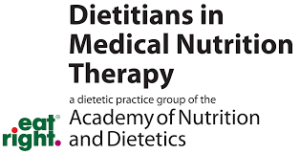What is the plant-forward diet?
A plant-forward food plan lets you be flexible with food choices, while being focused on adding and enjoying more plant foods, as part of balanced meals and snacks. A plant-forward diet is not about leaving out or limiting food groups and there is no single right way to reach a plant-forward eating pattern. The focus is on customizing eating to fit any regional or cultural dietary traditions and honoring an individual’s food values and preferences. Commonly known food plans that fit into “plant-forward” include, but are not limited to, flexitarian, vegetarian, vegan and Mediterranean diet patterns.
What conditions is the diet used for?
Everyone can benefit from a plant-forward diet, especially people with gastrointestinal disorders and those who are concerned about:
- Heart health
- Weight management
- Autoimmune conditions
- Better gut health
- Cancer
- General health and wellbeing
Why is it being recommended?
A balanced, whole food and plant-focused food plan has been shown to play a key role in preventing and managing metabolic-dysfunction associated steatotic liver disease (MASLD). New research shows the beneficial effects of a plant-forward diet pattern on metabolic syndrome, the development and progression of MASLD, and the liver manifestations of metabolic syndrome. The diet pattern is also thought to have anti-inflammatory effects on the body and support gut health which is an important consideration in liver disease.
How does the diet work?
A plant-forward diet pattern highlights flavorful and vibrant whole-plant nutrient-packed foods. The diet stresses enjoying more plant foods considering individuals personal preferences, culture, and lifestyles. Here are its key components:
Get to know the core parts of a plant-forward diet, such as emphasizing more plant-based foods, healthy fats, and moderate protein (animal or plant protein) with meals and snacks.
Fill your kitchen with staples like olive oil, avocado, whole grains, legumes, nuts, seeds, and fresh produce (whole fruits and vegetables).
Create balanced meals using a variety of vegetables, fruits, whole grains, and lean proteins. Try recipes like Greek salads, roasted vegetables, lentil soup, and fish dishes.
Make meals at home using fresh ingredients. Explore different flavors by using herbs and spices like turmeric, garlic, ginger, basil, oregano, and rosemary.
Include fish (especially fatty fish like salmon) in your diet regularly. It’s a great source of omega-3 fatty acids.
Eat red and processed meat (cold cuts, sausage, bacon, hot dogs, etc.,) sparingly. Choose poultry, beans, and legumes instead.
Snack on nuts, seeds, and fruits. Avoid processed snacks with added sugar.
Drink plenty of water as your primary source of hydration.
Getting started on a plant-forward diet
Here’s a sample one-day plant-forward diet pattern idea to get you started.
Greek yogurt parfait
- Low fat or nonfat Greek yogurt topped with fresh berries (such as blueberries or strawberries)
- A sprinkle of chopped nuts (like almonds or walnuts)
- Drizzle with honey or a touch of maple syrup
Apple slices with almond butter
- Slice an apple and dip it in almond butter
Mediterranean quinoa salad
- Mix cooked quinoa with diced cucumber, cherry tomatoes, red onion, and Kalamata olives
- Toss with extra virgin olive oil, lemon juice, and fresh herbs (such as parsley or mint)
- Serve with crumbled feta cheese
Hummus and veggie sticks:
- Carrot sticks, celery, and bell pepper strips dipped in hummus.
Baked salmon with roasted vegetables
- Season a salmon filet with lemon juice, garlic, and herbs (like dill or thyme)
- Bake until flaky
- Serve with roasted zucchini, bell peppers, and red onion (drizzled with olive oil and sprinkled with oregano)
Mixed nuts
- A small handful of mixed nuts (such as almonds, pistachios, and cashews)
Resources
Written by

Written by:
Shelby Yaceczko, DCN, RDN-AP
Jyoti Benjamin, MS, RD, CSO, FAND
Elizabeth Miracle, MS, RDN
Kara Bates, MS, RD
Reviewed by the DIGID Accessory Organ Workgroup
©June 2024

Written by:
Shelby Yaceczko, DCN, RDN-AP; Jyoti Benjamin, MS, RD, CSO, FAND; Elizabeth Miracle, MS, RDN; Kara Bates, MS, RD
Reviewed by the DIGID Accessory Organ Workgroup
©June 2024


